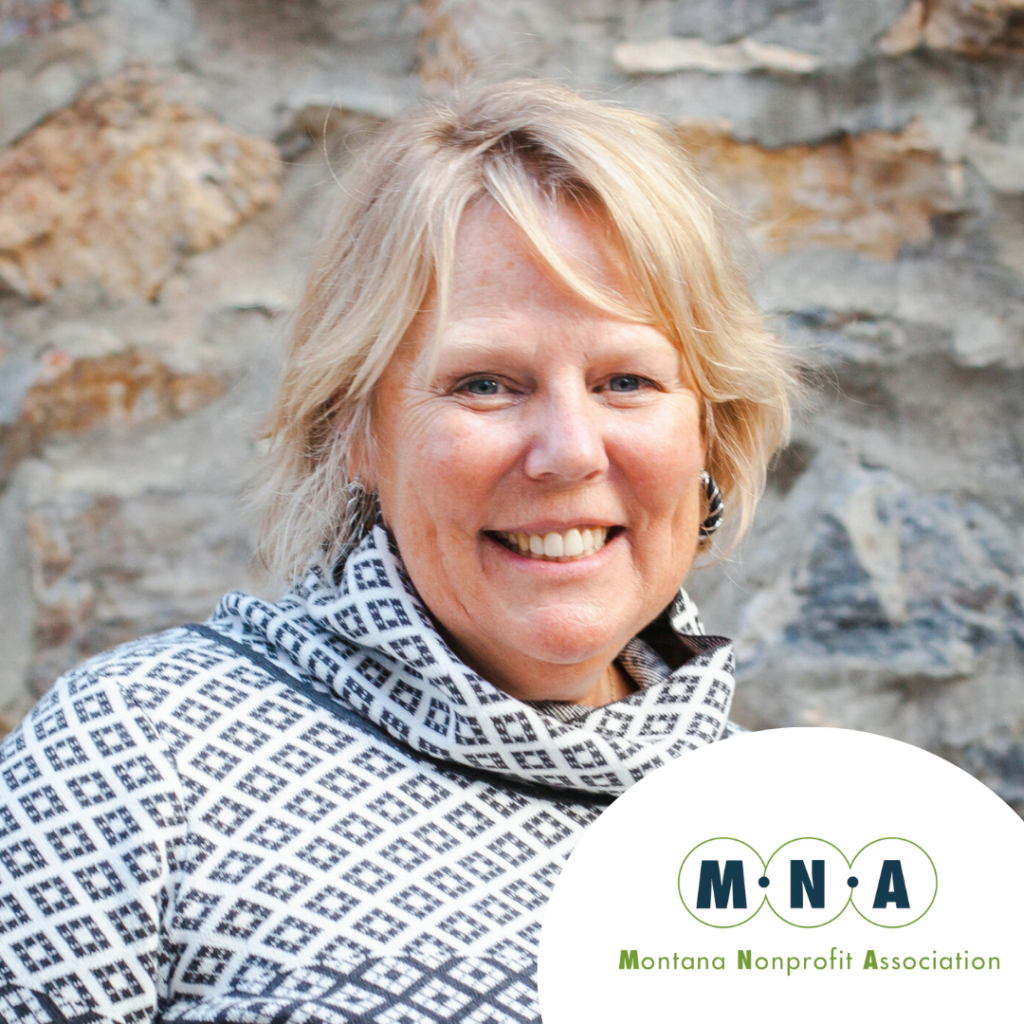Mar 3, 2023
Women and Nonprofit Leadership: A Conversation with Liz Moore

March 8 is International Women’s Day – a global day celebrating the social, economic, cultural and political achievements of women. One of the many areas where women have made remarkable contributions is in the nonprofit sector. According to Nonprofit Quarterly, women make up 73% of the national nonprofit workforce, yet a much smaller proportion of its leadership, especially at larger organizations (like hospitals and universities).
Liz Moore, Executive Director of Montana Nonprofit Association (MNA) is a powerful leader with a birds-eye view of the nonprofit sector in Montana. MNA works to provide leadership for Montana’s nonprofit sector and partner with charitable nonprofits to promote a sustainable, networked and influential sector.
We sat down to talk with Liz about her nonprofit leadership experience and how we can make the sector more conducive to women’s leadership.
Liz, what drives your leadership for Montana’s nonprofits?
I was brought up in a home where being of service was a high value. I also have a fundamental, bedrock belief that everyone belongs and that is tied up with the causes of nonprofits, that give voice and visibility to some of the things we value, that otherwise wouldn’t happen. I also have a fierce and abiding sense of being for and about Montana, and I think that stems from a fracturing kind of experience when I was 13, of leaving our ranch in Eastern Montana when my parents divorced, going all the way to South Florida, returning to Montana in the summers, and then coming back permanently in my 20s. This calling, idea of belonging and fierceness about Montana are what drive me.
What is the most difficult part and what is the most rewarding part of leading a nonprofit?
These things are tied up together. I didn’t grow up as a team player and when I started in nonprofit work, there was more of a sense of hierarchy, and now, as younger generations come in, they want a flatter structure, a more collaborative, team-oriented structure, and that has been a difficult but necessary adjustment for me. On the flipside, coming to terms with this and growing as a leader has been rewarding. Above all, I’m living my dream of making a difference; I have a job where I get to do that in a huge way – I feel very fortunate. Nonprofits are in a lot of ways the most underrecognized natural resource we have in Montana. What a rich career to be able to work in that space.
Let’s talk about the sector — why do you think nonprofit work attracts more women than men?
I think there is an element of self-sacrifice and women being willing to do more for less, but that is changing, and I hope it continues to change. This isn’t all about gender, but in nonprofit work, there has been this sense of ‘if I get decent pay for this, then it must not be for the mission, but for the money.’ It shouldn’t be that way. MNA is promoting nonprofit work as a profession — we want it to be fair, transparent, we want people to know what to expect, we want pay bands to be clear.
What do you think are the barriers to women taking on leadership roles, and how can nonprofits be more inclusive?
Boards and staff look to hire people who look and feel like them, and it takes a lot of intentionality not to. In some rural communities, you might see the same ten people serving on multiple Boards, and new people who might serve don’t occur to anyone and can’t enter the circle because they don’t look like those ten people.
The people most impacted should be listened to when decisions are made. Listen to women. Family isn’t a drawback, it’s a reality, so how do we accommodate someone’s wish to grow professionally while having a family? It shouldn’t be gender-related, or limiting for anyone. Flexibility is needed – how about childcare co-ops that are located close so that childcare is integrated so that people know their kids are okay when they are at work? And of course, fair pay!
How can philanthropy support women and diverse leaders?
Foundations can expect transparency around pay for nonprofits that they fund. They can also recognize that not all nonprofits are going to fit the dominant culture’s definition of success, and they can fund things that look different from their own culture and experiences. I think philanthropy can also ask what grantees are doing for the wellbeing of their staff – that tells us that they understand that when you have employees who stay and are well doing the work, that means you’re doing it right. And then they can fund those efforts directed toward wellbeing.
What advice would you give to young women looking to get into a leadership role?
At some point, you just have to go after it. Try on the word ‘leader.’ Trust yourself and, at the same time, exchange certainty for curiosity. Everyone is an executive for the first time once, and no one is ever ready – so just go for it, sooner rather than later. Also, ask for what you’re worth. If you’re not sure, ask a man what he thinks he is worth and he won’t have a problem telling you ‘I need a moving stipend and a phone allowance and this and that.’ Ask for that. (laughing) And throw your hat in the ring even if you don’t think you’re entirely qualified. Because you are qualified.
Note: This interview has been edited for length and clarity.